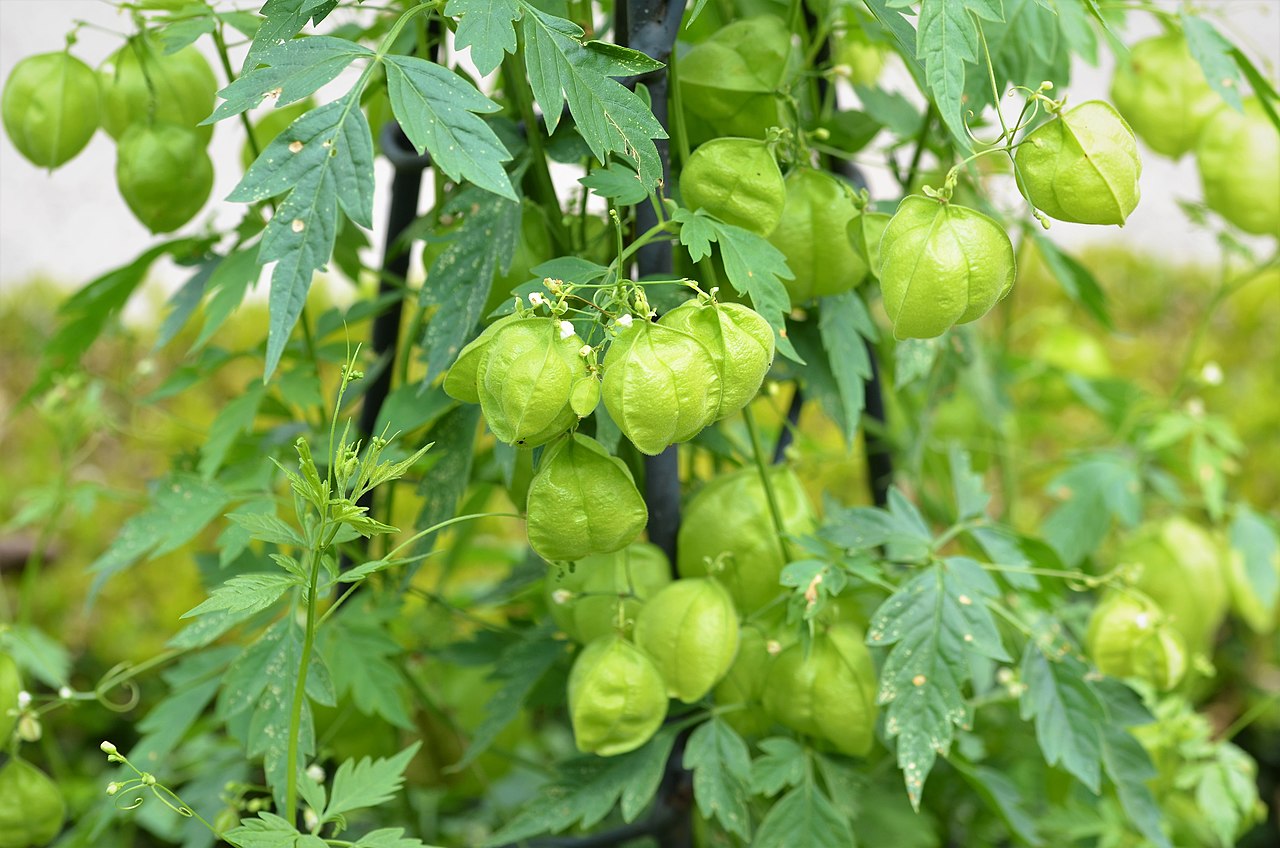Cardiospermum halicacabumL.
The balloon vine is a strongly overgrown, perennial herbaceous climbing plant that can even become lignified at the base. Growing over 10 meters high, it can bloom at a height of around 25 cm. The slender, grooved stems are hairy bald to sparsely downy. he 5 to 6 cm long, triangular foliage leaves distributed on the stem are divided into a petiole and pinnate leaf blade. The leaf margins are serrated. The stipules are reduced to tiny, early-falling scales.There are three to seven flowers in a zymous inflorescence. Flowers and fruit:The functionally unisexual flowers are zygomorphic and fourfold double perianth.The conspicuous, membraneous, almost spherical or broad pear-shaped capsule fruits have a diameter of 3 to 5 cm, initially fluffy hairy, light green "balloons" brown when ripe.It is one among the "Ten Sacred Flowers of Kerala, collectively known as dasapushpam.
- Family: Sapindaceae
- Habit: Annual and perennial
- Habitat: Grasslands, shrublands, forest margins, wastelands and cultivated areas in native range
- Status : Common
Vernacular names
English -balloon plant
Malayalam- Karuttakunni
Tamil-Modikkottan
Medicinal Uses
The root is diuretic and demulcent. It is mucilaginous but has a nauseous taste, and is used to treat rheumatism. The leaves are used in amenorrhoea. Rheede says that on the Malabar coast the leaves are administered for pulmonic complaints. It is also used in homeopathy to treat eczematic skin. For this purpose, a mother tincture is made from the flowering parts of the plant. This is also processed into creams and ointments
